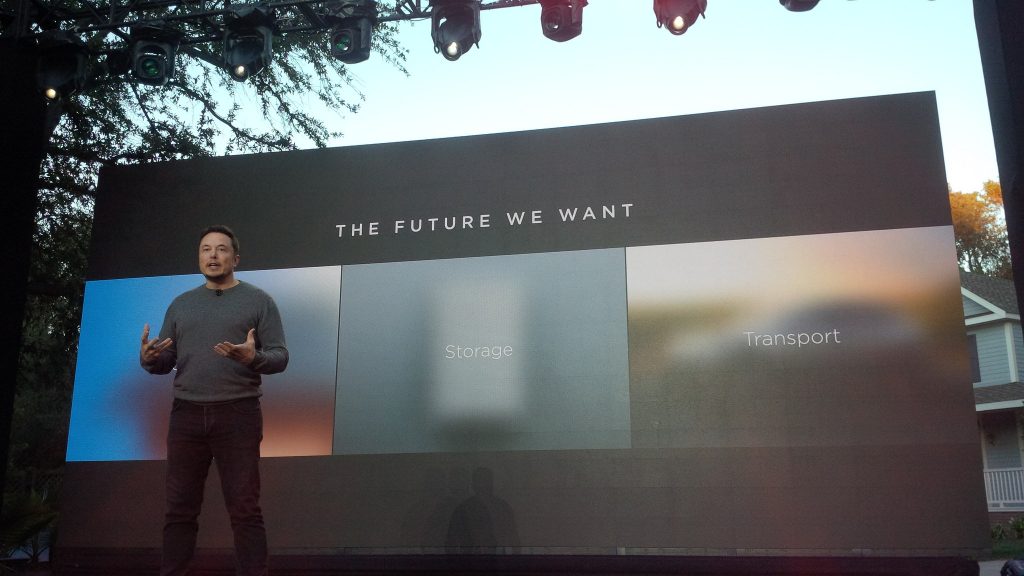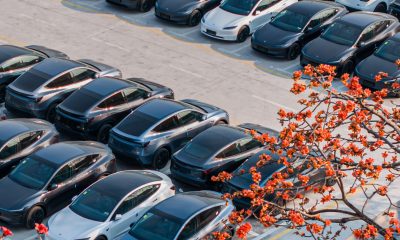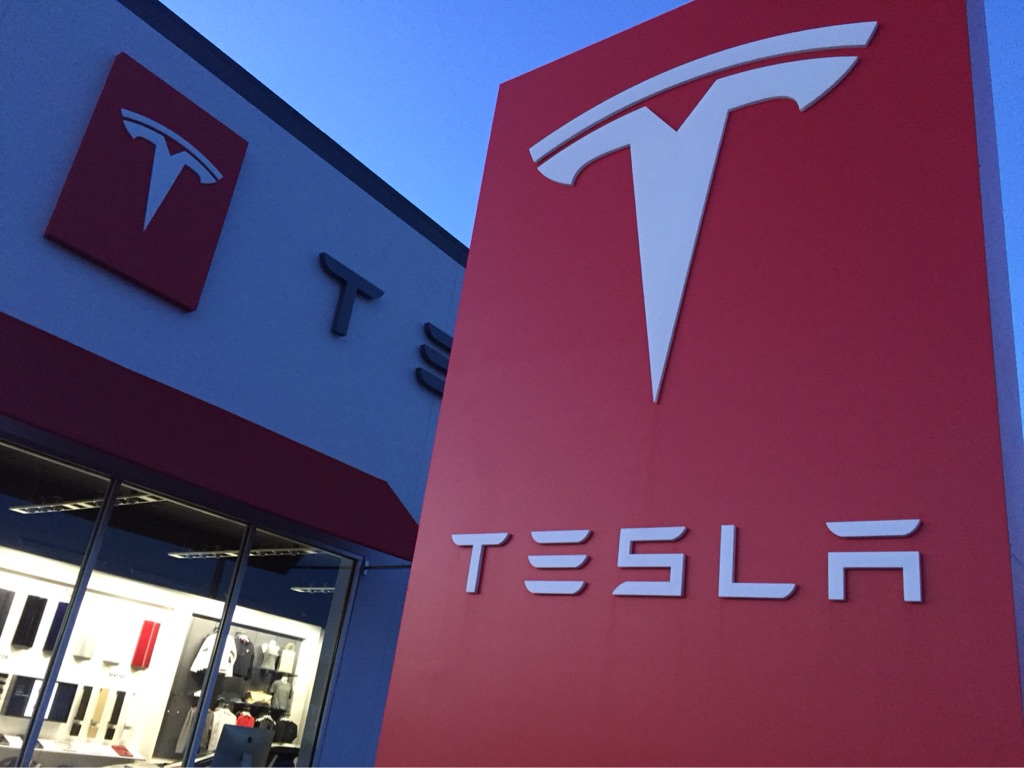

Energy
Here’s what it takes to work at Tesla
The following post was originally published on EVANNEX
On March 28th, Andrew Stevenson of Tesla’s Special Projects delivered a keynote speech titled, “Opportunities for Students in Building a Sustainable Energy Future,” during the Carnegie Mellon University’s Scott Institute for Energy Innovation* 2017 Energy Week. Stevenson works closely with Tesla co-founder and chief technical officer, J.B. Straubel, tackling projects that don’t always fit neatly into existing programs within the company. That said, Stevenson was certainly qualified to discuss what he described as Tesla’s “scalable approach to problem solving.”
The presentation appeared to be part of Stevenson’s efforts to actively recruit some of the best and brightest students from Carnegie Mellon University. He noted that most of Tesla’s hiring is currently focused on engineering students with an emphasis on mechanical engineering. Stevenson’s presentation revolved around what he referred to as the “six core building blocks” needed while working at Tesla: 1. Mission; 2. Teams; 3. First Principles; 4. Autonomy and self-motivation; 5. Critical thinking and root cause analysis; and 6. Continuous improvement.
Stevenson reiterated that Tesla’s mission continues to be “to accelerate the world’s transition to sustainable energy.” He noted that Tesla started small with just 5 people on staff. Yet it’s grown to over 30,000 employees worldwide. Regardless of how big Tesla grows, the emphasis remains on small, entrepreneurial teams to handle the company’s challenges.
Stevenson described Tesla’s “first principles” approach as using “fundamental reasoning” — not deferring to “the way others have done it.” He pointed out the fact that the Model S was “designed from the ground up” to be an all-electric vehicle. And, he also described Tesla’s solar roof as another strong application of the first principles approach.
Another core building block Stevenson described was “autonomy and self-motivation” being a means for employees to be proactive instead of waiting for management to dictate deliverables. He described how the company (itself) used this approach. When rumors started about various government entities setting up charging networks, Tesla still went ahead and established their own Supercharger Network in advance of those efforts. This definitely paid off for Tesla and it’s customers later on.
With “critical thinking and root cause analysis,” Stevenson explained that, as part of Tesla’s mission, the company sought out renewable energy sources in hopes that they would become more prevalent on the grid. In turn, Tesla recognized that energy storage was “the missing piece.” Therefore, Tesla pushed forward and built their own Powerpack stationary storage product line in order to help implement grid-based solutions for renewables. One slide (see below) also highlighted Tesla’s recent acquisition of SolarCity as part of this 360-degree sustainable energy solution.
With “continuous improvement” Stevenson reminded us that software companies have been using this approach for some time. In Tesla’s case, the Gigafactory itself is a key example — as Tesla decided to build one section at a time in order to quickly start work within the building, it proceeded to continue construction — building additional sections and applying key learnings along the way. In addition, Stevenson also cited Tesla Autopilot as a prime example of continuous improvement.
Highlighting three of Tesla’s current special projects, Stevenson discussed: the solar roof, autopilot, and factory automation (the machine that builds the machine). Most fascinating was when Stevenson reviewed Tesla’s factory automation (referred to internally as MTBTM) as a mission-critical internal initiative. A slide (see above) also pointed out Germany’s Grohmann Engineering which the company recently acquired. He noted that Tesla didn’t want to rely so strongly on suppliers as it felt like “shopping from a catalog” and, instead, wanted more control via vertical integration.
Stevenson emphasized the Model 3 as the core focus right now companywide. But he also laid out five future challenges (see above) Tesla is currently facing: 1. Selling sustainable energy; 2. Scaling service and support; 3. Building a global company; 4. Re-thinking the materials supply chain; and 5. Recruiting and education. And he acknowledged plans for the Tesla truck (in the Q&A) and mentioned “developing a Tesla product to address all the vehicle segments” as part of Tesla’s future plans. For Stevenson’s full presentation, check out the video below.
Elon Musk
Tesla Energy shines with substantial YoY growth in deployments

Tesla Energy shined in what was a weak delivery report for the first quarter, as the company’s frequently-forgotten battery storage products performed extraordinarily well.
Tesla reported its Q1 production, delivery, and deployment figures for the first quarter of the year, and while many were less-than-excited about the automotive side, the Energy division performed well with 10.4 GWh of energy storage products deployed during the first quarter.
This was a 156 percent increase year-over-year and the company’s second-best quarter in terms of energy deployments to date. Only Q4 2024 was better, as 11 GWh was recorded.
Tesla Energy is frequently forgotten and not talked about enough. The company has continued to deploy massive energy storage projects across the globe, and as it recorded 31.5 GWh of deployments last year, 2025 is already looking as if it will be a record-setting year if it continues at this pace.
Tesla Megapacks to back one of Europe’s largest energy storage sites
Although Energy performed well, many investors are privy to that of the automotive division’s performance, which is where some concern lies. Tesla had a weak quarter for deliveries, missing Wall Street estimates by a considerable margin.
There are two very likely reasons as to why this happened: the first is Tesla’s switchover to the new Model Y at its production facilities across the globe. Tesla said it lost “several weeks” of production due to the updating of manufacturing lines as it rolled out a new version of its all-electric crossover.
Secondly, Tesla could be facing some pressure from pushback against the brand, which is what many analysts will say. Despite the publicity of attacks on Tesla drivers and their vehicles, as well as the company’s showrooms, it would be safe to assume that we will have a better picture painted of what the issue is in Q2 after the company reports numbers in July.
If Tesla is still struggling with lackluster delivery figures in Q2 after the Model Y is ramped and deliveries are more predictable and consistent, we could see where the argument for brand damage is legitimate. However, we are more prone to believe the Model Y, which accounts for most of Tesla’s sales, and its production ramp is likely the cause for what happened in Q1.
In what was a relatively bleak quarter, Tesla Energy still shines as the bright spot for the quarter.
Energy
Tesla lands in Texas for latest Megapack production facility
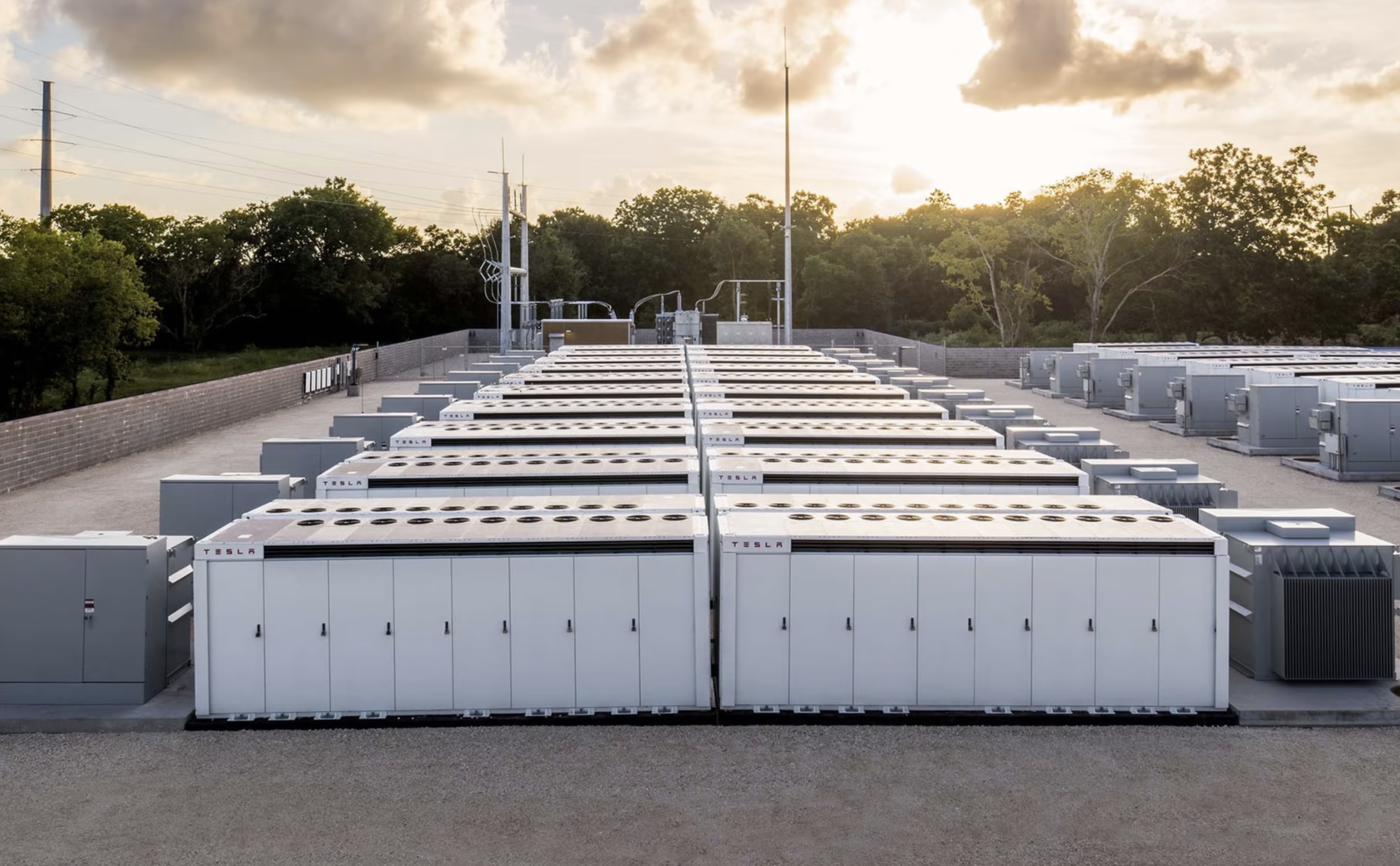
Tesla has chosen the location of its latest manufacturing project, a facility that will churn out the Megapack, a large-scale energy storage system for solar energy projects. It has chosen Waller County, Texas, as the location of the new plant, according to a Commissioners Court meeting that occurred on Wednesday, March 5.
Around midday, members of the Waller County Commissioners Court approved a tax abatement agreement that will bring Tesla to its area, along with an estimated 1,500 jobs. The plant will be located at the Empire West Industrial Park in the Brookshire part of town.
Brookshire also plans to consider a tax abatement for Tesla at its meeting next Thursday.
The project will see a one million square-foot building make way for Tesla to build Megapack battery storage units, according to Covering Katy News, which first reported on the company’s intention to build a plant for its energy product.
CEO Elon Musk confirmed on the company’s Q4 2024 Earnings Call in late January that it had officially started building its third Megapack plant, but did not disclose any location:
“So, we have our second factory, which is in Shanghai, that’s starting operation, and we’re building a third factory. So, we’re trying to ramp output of the stationary battery storage as quickly as possible.”
Tesla plans third Megafactory after breaking energy records in 2024
The Megapack has been a high-demand item as more energy storage projects have started developing. Across the globe, regions are looking for ways to avert the loss of power in the event of a natural disaster or simple power outage.
This is where Megapack comes in, as it stores energy and keeps the lights on when the main grid is unable to provide electricity.
Vince Yokom of the Waller County Economic Development Partnership, commented on Tesla’s planned Megapack facility:
“I want to thank Tesla for investing in Waller County and Brookshire. This will be a state-of-the-art manufacturing facility for their Megapack product. It is a powerful battery unit that provides energy storage and support to help stabilize the grid and prevent outages.”
Tesla has had a lease on the building where it will manufacture the Megapacks since October 2021. However, it was occupied by a third-party logistics company that handled the company’s car parts.
Energy
Tesla Energy had a blockbuster 2024

Tesla Energy has become the undisputed dark horse of the electric vehicle maker. This was highlighted by Tesla Energy’s growing role in the company’s overall operations in the past quarters.
And as per Tesla’s year-end milestone posts on X, Tesla Energy had a blockbuster 2024.
Tesla Energy’s 2024 milestones:
- As per Tesla on its official social media account on X, the company has hit over 800,000 Powerwalls installed worldwide.
- From this number, over 100,000 Powerwall batteries have been enrolled in virtual power plant (VPP) programs.
- The Powerwall 3 has officially been launched in the United States, Canada, Puerto Rico, the U.K., Germany, Italy, Australia, and New Zealand.
- The Tesla Megapack hit over 22 GWh in operation across more than 60 countries across the globe.
- The Lathrop Megafactory, which produces the Megapack, has been ramped to 40 GWh per year.
- The Lathrop Megafactory has also produced its 10,000th Megapack battery.
- The Shanghai Megafactory was completed in just seven months, and it is ready to start Megapack production in Q1 2025.
Hit 800k Powerwalls installed worldwide
— Tesla (@Tesla) December 31, 2024
Also:
– Over 100k Powerwalls are now enrolled in VPP programs
– Launched Powerwall 3 in the US, Canada, Puerto Rico, UK, Germany, Italy, Australia & New Zealand
– Megapack hit 22+ GWh in operation across 60+ countries
– Ramped… pic.twitter.com/bE88DpeyTg
Powerwall owners’ 2024 impact:
- As per Tesla Energy, Powerwall owners generated a total of 4.5 TWh of solar energy globally in 2024. This was equivalent to powering a Model 3 for more than 17 billion miles.
- A total of 1.1 TWh of energy was stored in Powerwalls in 2024. This protected homes from over 5.8 million outages during the year.
- Tesla’s Storm Watch feature for Powerwall batteries covered 2.8 million severe weather events over the year.
- Powerwall owners saw collective savings of over $800 million on utility bills.
- Virtual Power Plants contributed over 2.2 GWh of power to the grid. This reduced the need for 2,200 metric tons of fossil fuel peaker plant emissions.
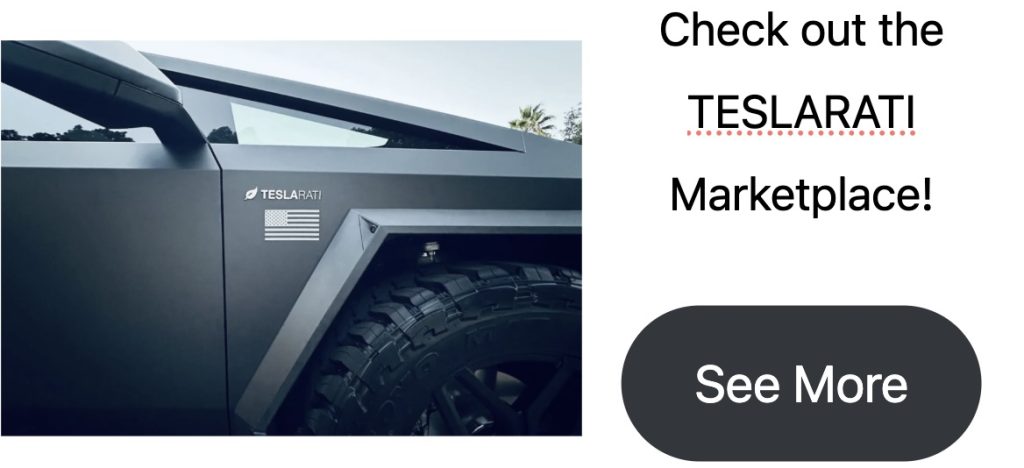
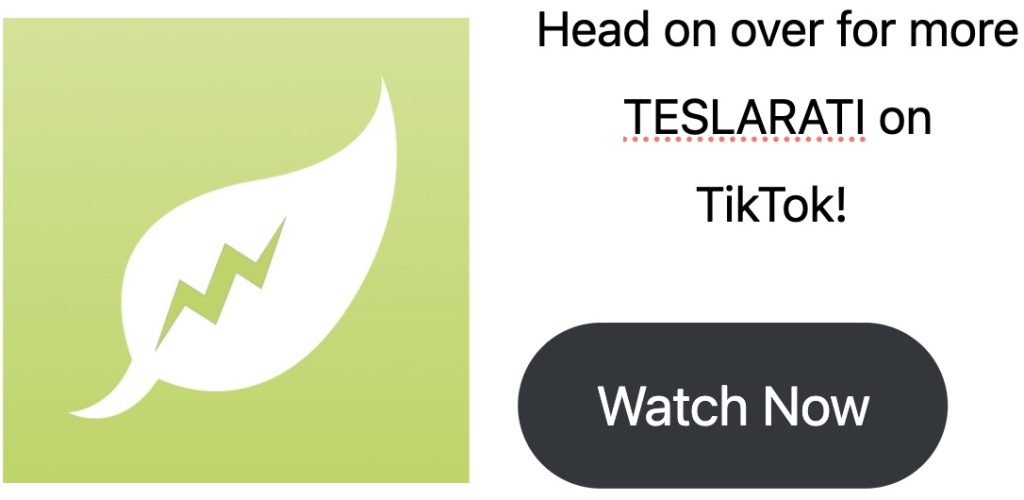
Don’t hesitate to contact us with news tips. Just send a message to simon@teslarati.com to give us a heads up.
-

 News1 week ago
News1 week agoTesla’s Hollywood Diner is finally getting close to opening
-

 Elon Musk2 weeks ago
Elon Musk2 weeks agoTesla doubles down on Robotaxi launch date, putting a big bet on its timeline
-

 News4 days ago
News4 days agoTesla is trying to make a statement with its Q2 delivery numbers
-

 News2 weeks ago
News2 weeks agoTesla’s top investor questions ahead of the Q1 2025 earnings call
-

 News2 weeks ago
News2 weeks agoUnderrated Tesla safety feature recognized by China Automotive Research Institute
-

 News2 weeks ago
News2 weeks agoTesla reveals its Q1 Supercharger voting winners, opens next round
-

 News2 weeks ago
News2 weeks agoTesla police fleet saves nearly half a million in upkeep and repair costs
-

 Investor's Corner7 days ago
Investor's Corner7 days agoLIVE BLOG: Tesla (TSLA) Q1 2025 Company Update and earnings call

